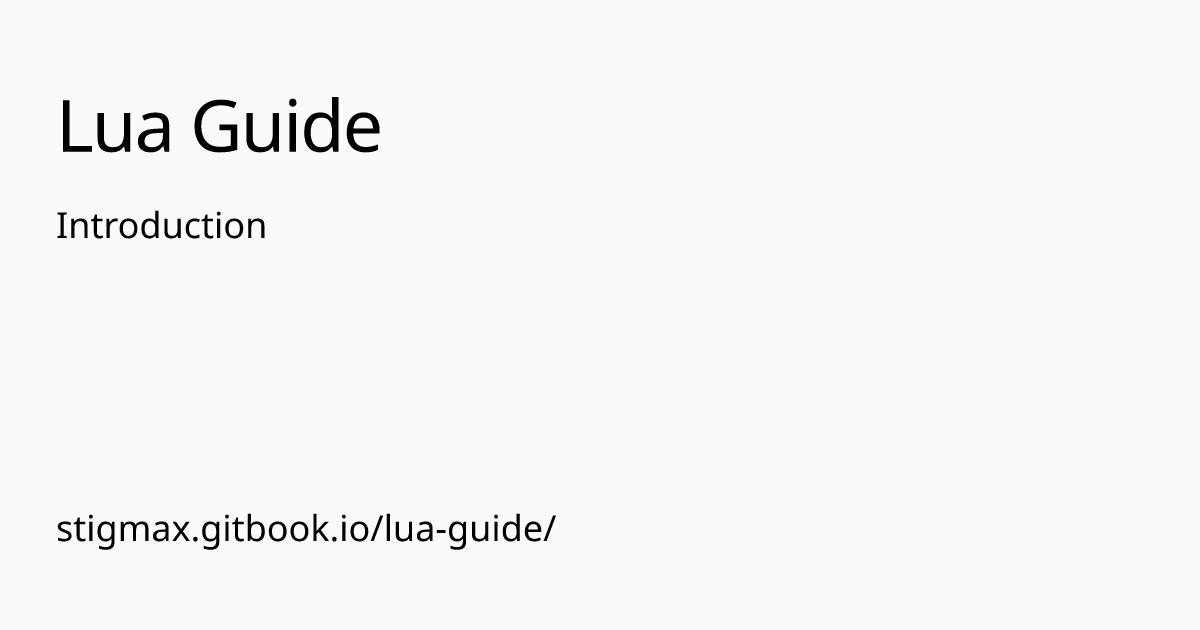- Joined
- Feb 14, 2015
- Messages
- 5,642
- Solutions
- 559
- Reaction score
- 3,974
I've been working on a book which aims to provide a way to learn for anybody looking to learn Lua. The end goal is to have a book that lets anybody go from zero knowledge to being experienced, and to provide even just 1 thing that somebody could learn, even if the reader is experienced.
Hopefully what I'm writing here will be easier to understand than anything given or explained by the official Programming in Lua book, or any explanation on lua-users.
This book isn't so people can learn scripting for TFS. I believe it is infinitely more important to learn the language itself rather than learning just enough to get by and create nooby scripts in TFS. Learning the language itself and applying that knowledge to TFS will be much easier in the long run than not knowing what you're doing and simply just copy/pasting code (this is exactly how I learned and how I got here today!).
This book is not finished, but I have finished all of the basics that anybody looking to learn will need, and there will be much more to come.
If you're here to learn, tell me what you don't understand! It will help me improve and be able to provide a better explanation for future readers. Experienced readers, alert me of any typos or mistakes I may have made, or if you have any recommendations on analogies or examples, let me know!
I believe anybody, even if you're unfamiliar with programming, can learn at least how to do basic things in any language. All you have to do is have an open mind and apply yourself.
You can view the book here:

 stigmax.gitbook.io
stigmax.gitbook.io
Hopefully what I'm writing here will be easier to understand than anything given or explained by the official Programming in Lua book, or any explanation on lua-users.
This book isn't so people can learn scripting for TFS. I believe it is infinitely more important to learn the language itself rather than learning just enough to get by and create nooby scripts in TFS. Learning the language itself and applying that knowledge to TFS will be much easier in the long run than not knowing what you're doing and simply just copy/pasting code (this is exactly how I learned and how I got here today!).
This book is not finished, but I have finished all of the basics that anybody looking to learn will need, and there will be much more to come.
If you're here to learn, tell me what you don't understand! It will help me improve and be able to provide a better explanation for future readers. Experienced readers, alert me of any typos or mistakes I may have made, or if you have any recommendations on analogies or examples, let me know!
I believe anybody, even if you're unfamiliar with programming, can learn at least how to do basic things in any language. All you have to do is have an open mind and apply yourself.
You can view the book here:
Introduction | Lua Guide
The goal of this guide is to provide a way for anybody to learn Lua, regardless of previous programming experience or knowledge of programming fundamentals.
Last edited:
